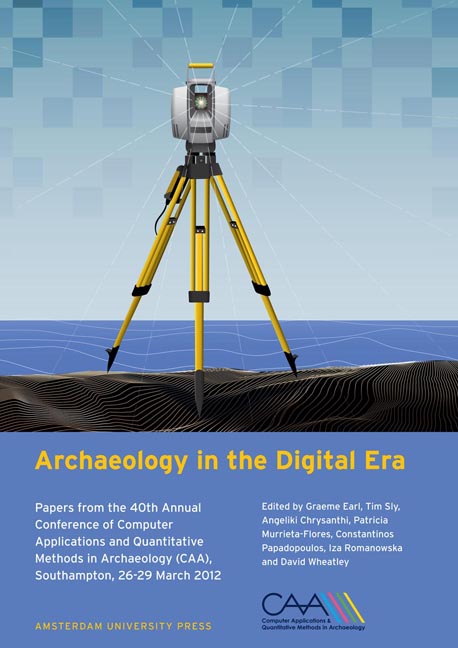 Archaeology in the Digital Era
Archaeology in the Digital Era Pompeii Revived: Scanning Mission - Insula V1
Published online by Cambridge University Press: 16 February 2021
Summary
Abstract:
The Swedish Pompeii Project started in 2000 as a fieldwork initiated from the Swedish Institute in Rome. The aim was to record and analyze a full Pompeian city-block, Insula V1. This paper presents the initial results of one of the actions in the context of this project. In October 2011, two houses were acquired using 3D scanning and gd-from-photos techniques, and the data was processed to obtain an accurate and complete model. Through the use of Virtual Reality Techniques, it will be possible to visit the Pompeian houses of Casa del Torello and Casa di Cecilio Giocondo understanding the relation between the actual archaeological context and their original outfit. The collected data will be used also to design and test a web-based access system, where the entire dataset will be available for browsing, measurement and data extraction. The features of HTML5, in particular WebGL, will be used to deliver realtime 3D content and interaction.
Keywords:
Field Recording, 3D Scanning, Pompeii
Introduction
Three-dimensional digital surveys have become, in the last few years, a standard tool for cultural heritage studies. The advancements in both the scanning devices and the computers used in data processing and visualization have enabled the cultural heritage operators to carry out large-scale surveys and data gathering campaigns.
This technological advancement, however, cannot, by itself be a game-changer in the field of cultural heritage studies.
In order to effectively use all the data produced by these technologies, it is necessary to carefully consider all the aspects of the digitization campaign and the available tools for the processing of the data, and to have a clear idea of the possible uses of the generated dataset.
While in recent literature it is easy to find examples of quite extensive 3D scanning and data gathering campaigns, what is still, in most cases, missing is a plan to effectively manage and use all the gathered data.
The Swedish Pompeii Project
During autumn 2000 the Swedish Institute in Rome started a campaign of field documentation of the Insula V, 1 in Pompeii with the aim of recording and analyzing a full Pompeian city-block. From the very beginning, different types of documentation techniques and technologies were tested; this multiple approach of methods was realized in order to provide an accurate, conjoint description of as many different aspects of the ancient buildings as possible.
- Type
- Chapter
- Information
- Archaeology in the Digital EraPapers from the 40th Annual Conference of Computer Applications and Quantitative Methods in Archaeology (CAA), Southampton, 26-29 March 2012, pp. 199 - 207Publisher: Amsterdam University PressPrint publication year: 2014


